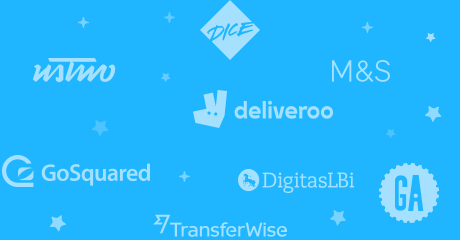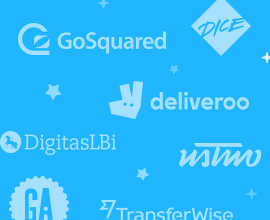Medication management is an area where disruption is long overdue. Despite best efforts, GP practices and pharmacies are still very much paper-based operations, where the fax machine reigns supreme. Echo has the answer to the frustrating, analogue process of ordering repeat prescriptions. In a sensitive industry where trust is not easily won, how does one design to disrupt?
Sai Lashimi, CEO, and Stephen Bourke, CXO, have both been taking repeat prescriptions throughout their lives and have devised an app to facilitate the communication, ordering and delivery of medication. The free app enables you to order repeat prescriptions from your NHS GP and have medication delivered to your door by a community pharmacy. It also incorporates reminders which automatically tell you when to take your medication and when you're about to run out.
We spoke to Sai, Stephen and their UX Designer Oykun Yilmaz, about their startup story, their design process, how they hire and challenges they’ve faced.
The concept of this app could be life-changing, how did you come up with the idea?
Sai: Stephen and I both take repeat prescriptions and have done so for most of our lives. We know the frustrations of our audience, particularly those with busy lives. We originally started working on how we could solve a problem of inconvenience, but have since discovered that the real problem we’re solving is medication adherence, or in plain English, “How do we get people to take their medication as per their GP’s instructions?”
“According to the UK’s Department of Health, between one third and half of all medications aren't taken properly. This is a major issue.”
“I'm not a doctor, but I have a PhD in being a patient.”
Stephen: Sai and I were introduced by a mutual friend. Sai was working for Apple and I was running a successful online doctor practice. I saw the potential for digital innovation in the NHS and thought, "I need a partner." Sai, likewise, had been thinking about how to fix repeat prescription management since 2010. We got together and, within months, had both quit our jobs and got started on Echo.
Are there any other problems your app addresses and solves for the user?
“What we want to do is create an open, transparent digital dialogue between the GP, the pharmacist, and the user in order to really optimize care and make it as efficient as possible.”
Stephen: The first step is establishing what medications you take. A lot of people don’t know that name of medication they’re on. For instance, Salbutamol, a popular asthma treatment, is also known by its trade name Ventolin, or simply “the blue inhaler”.
To solve this we've built a huge, bespoke database of all the potential medications available on the NHS and broken it down into plain English. We've linked this database to the barcodes you find on the side of boxes of medicine, and have also built an advanced OCR scanner so that you can take a photograph of the box and it’ll tell you the medication you’re on. That means that, even if you don't know what you're taking, we will.
Sai: The second thing was to make the order process as transparent as possible. As a user, I don't really care about what's going on in the background. I just want to get my meds on time. So we handle the integration with the GP’s systems via our back-end. We also use a bespoke natural language processing algorithm to convert GP directions to reminders, nudging people towards better medication adherence.
“How we will win as a business and how we will create the most value is by focusing on experience.”
We are fortunate to be working with an incredibly talented team, with the right specialised skills to build the best experience for our customers. For instance, our Product Manager is a qualified NHS doctor, and makes sure that everything we do exceeds NHS clinical standards. Likewise, our Lead Dev has come from Skype and has a wealth of experience building robust, communication platforms.
What was your design process and how did you ensure the visuals appeal to such a wide demographic?
Stephen: We were introduced to our UX Designer Oykun by Murat, Marvel’s founder, and he is truly special... he is one of the most talented designers that I've ever worked with. He openly confesses that, when he first saw the project, he thought that it was going to be a lot easier than it was. He didn't immediately twig the sheer complexity of what we’re doing, because when it comes to medication, you cannot afford to generalize. But in fairness, Oykun is a quick study.
“In this industry, we cannot generalise. We’re accountable for what we do.”
Oykun: The process started with dedicating time and attention to the mission of the business and the purpose of the product. This is so crucial because, as designers, people come to us to solve a problem. I’m not an expert in the medical industry so I had to start with research.
This was one of my main challenges with Echo, understanding that there are so many different medications and different patients that there isn’t just one solution. Mostly speaking to Sai and Stephen aided my design process but I did my own research into the NHS, looked into medical news and even spoke to users for feedback.
"We looked at the existing solutions and said, “Let's forget about everything that has come before. Let’s build something great.""
Sai: Understanding the break-points and user feedback is incredibly important to us because that's what enables us to improve and grow. It's amazing that what we already built has had such a positive impact on our users lives, and our NPS of 89 is really encouraging. But we are only getting started - we've got lots and lots more to do.
Oykun: Once I understood the problem Echo was solving, I started with very basic wireframes in Marvel and communicated everything to Sai and Stephen through the tool, using the comments and annotations features. I find it useful to create a very basic flow which addresses most of the problems and aspects of the product discussed. I tend to work remotely and so visited their office frequently to work with them on the initial prototype to get more detail and feedback.
As designers, people mostly come us to solve a problem about a business that we don't know much about. Studying the business model of product and fully understanding how it works in real life plays huge role when starting a project.
In those meetings, we wrote everything up as comments in the Marvel project. I don’t use any other papers, tools or notepads for communication. Using multiple channels can get taxing as things can easily get lost. I took all of this feedback into a second version of the prototype. Keeping everything in grayscale at this stage, as there is no need to spend time on visuals whilst the flow is being established.
Once the flow has been finished and approved, the developers begin to create logic to the backend using the notes I’d shared within the Marvel project. Then I created a separate project for UI design and began designing the visuals.
In order to appeal to Echo’s huge demographic, I had to consider the most effective colour scheme. In the first version there were low contrast colours which some users had difficulty reading. So, for the older or visually impaired users, I reconsidered and introduced a high contrast colour scheme, added larger font types and bigger buttons for an improved experience.
When it comes to inspiration, I’m not someone who looks at Dribbble or Behance too much because I find that this can influence your work, sometimes unconsciously.
What are some of the key challenges you have faced considering the speed in which Echo has grown?
Sai: I really want Echo to be a big success. Not only for personal reasons but also because I think if something like this doesn't take off, the NHS is doomed. It’s crucial that innovation starts delivering real, scalable results. Once we get the core products sorted out, it gives us the ticket to start doing other products and services. As far as we can tell, nobody has attempted something this big from scratch in the NHS.
“Not only have we got the big ambition, but we've also got the pressure that comes with it.”
Stephen: For me the biggest challenge is trying to explain Echo to people who don't take repeat medication. It’s a bit like trying to explain the benefits of Uber to people used to calling for a mini-cab. Too often people settle for ‘good enough’ when it comes to NHS services, partly because they are free at the point of care. We want to challenge this mindset.
Why shouldn’t the NHS leverage the very best design and technology? We see a big opportunity to fix healthcare problems through the application of world-class design and relentless focus on the user experience. But as Sai says, we are only getting started.
Would Echo be useful for yourself or someone in your family? Available for download on iOS here.




